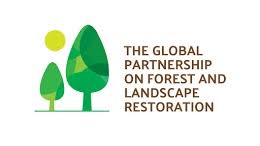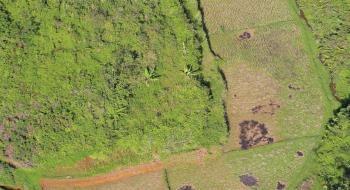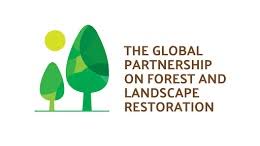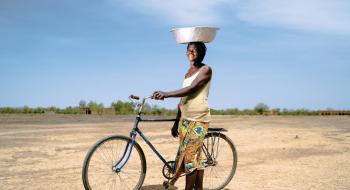Location
The Global Partnership on Forest and Landscape Restoration (GPFLR) is a proactive global network that unites governments, organizations, academic/research institutes, communities and individuals under a common goal: to restore the world’s lost and degraded forests and their surrounding landscapes.
Specifically, the GPFLR responds directly to the Bonn Challenge to restore 150 million hectares of deforested and degraded land by 2020 and 350 million hectares by 2030.
The GPFLR was initiated in 2003 by a small consortium of like-minded organizations and spearheaded by IUCN. Its purpose is to catalyze dynamic, voluntary action through sharing diverse experiences on restoration efforts which deliver tangible benefits to both local communities and nature through a landscape approach, while also fulfilling international commitments on forests.
The GPFLR does this by:
Catalyzing support
Members of the partnership work together to build support for forest and landscape restoration (FLR) at all levels. This includes building awareness and securing the interest of decision-makers and opinion-shapers from government, the private sector, civil society, the media and others. It also involves promoting increased support for FLR in international, regional and national policy frameworks.
Creating knowledge networks to accelerate restoration effort
As practitioners of FLR, we are learning all the time, through experience and from each other. The GPFLR Learning Network provides an important vehicle for that process. Our aim is to raise awareness of real world FLR experiences and make available the tools and knowledge to support practitioners in the field. By connecting our partners and collaborators around the world in an FLR community of practice we are able to spread best practices, build cooperation and exchange new ideas and solutions, saving both time and resources.
Capacity development
Courses and workshops are essential to developing individual and collective capacity with respect to the conservation and restoration of forest landscapes. Our partners organize multiple and varied courses and learning opportunities related to FLR all over the world and online.
We believe that ideas transform landscapes
Through active engagement, collaboration and the sharing of ideas and information, GPFLR promotes an integrated, cross-sectoral approach to restoration that seeks to ensure that forests and the functions and values they represent are effectively re-established, conserved and used to enable sustainable livelihoods and ecological integrity for the future.
The GPFLR does not seek to establish a parallel policy process or duplicate the efforts of others, but rather pursues and creates positive synergies between existing activities, projects, processes and institutions to encourage and reinforce the contribution of each.
Members:
Resources
Displaying 1 - 5 of 23RESTORING FORESTS AND LANDSCAPES: THE KEY TO A SUSTAINABLE FUTURE
This publication provides facts, figures and key messages to encourage more investments in forest and landscape restoration, leading to more restoration action. The Global Partnership on Forest and Landscape Restoration outlines how we can reach the 2020 and 2030 targets, and how we can best collaborate, using regional and global platforms.
World Bank: Oases Ecosystems and Livelihoods Project, Tunisia
This project aims to improve sustainable natural resource management and promote livelihood diversification in selected Tunisian oases.
Tunisia has significant regional and social disparities, especially between the coastal and inland areas. Its oases have always been agricultural production and trade centers that link remote regions together. They cover about 41,710 hectares of the country’s area and are home to around 950,000 people.
World Bank: Ningxia Desertification Control and Ecological Protection Project, China
Desertification in arid and semiarid areas of Northwest China is a major current environmental issue for the country, caused by the interaction of a naturally dry climate, recurrent periods of prolonged droughts, anthropogenic factors over long periods of time, and specific topographic and geographic conditions. Among the anthropogenic factors are poor land management, inadequate farming techniques and over-cultivation, overgrazing and the removal of natural vegetation; misuse of water resources; and poor environmental and ecosystem management.
World Bank: Climate Adaptation and Mitigation Program for Aral Sea Basin
The five Central Asian countries (Kazakhstan, Kyrgyz Republic, Tajikistan, Turkmenistan, and Uzbekistan) are among the Europe and Central Asia Region’s most vulnerable to climate change; building resilience is thus a priority for poverty reduction and shared prosperity in Central Asia. Such impacts are already being felt and are expected to intensify, with the agriculture, energy, and water sectors most at risk.
World Bank: The Sahel and West Africa Program (SAWAP), in support of the Great Green Wall Initiative
Sahelian Africa is significantly affected by rainfall variability. Its populations are among the poorest and most threatened by climatic changeability and land degradation, as they depend heavily on healthy ecosystems to sustain their livelihoods. Increasing pressures on food, fodder, and fuelwood have a significant impact on the environment; and frequent droughts and poorly managed land and water resources contribute to expanding soil erosion. The Great Green Wall for the Sahara and the Sahel Initiative emerged in 2007 to address climate change, land degradation, and desertification.






